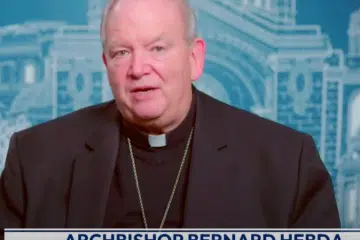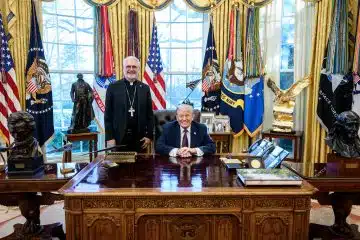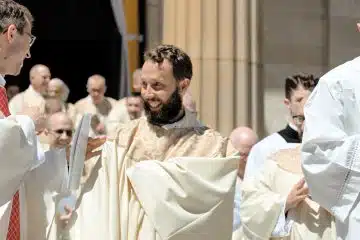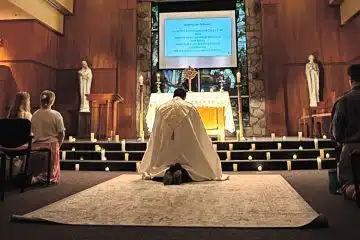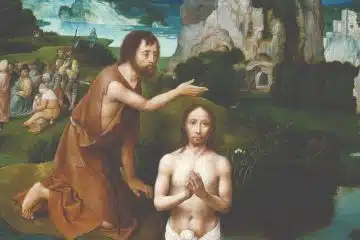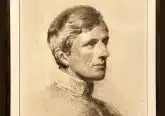A Closer Look: The Education of a Catholic Christian
Toward the end of his life, American journalist and historian Henry Adams, dissatisfied with the adequacy of his traditional education, composed his memoir, The Education of Henry Adams. “The object of education,” he suggested, “should be the teaching . . . [of ] how to react with vigor and economy” to problems that challenge a person. A thorough “education should try to lessen the obstacles, diminish the friction, invigorate the energy, and should train minds to react, not at haphazard, but by choice, on the lines of force that attract their world.”
In other words, education should not be about the mere accumulation of facts. Rather, the goal of a complete education is to attain the intellectual and moral skills to clear the unforeseen hurdles that confront us, and to negotiate through the maze of competing claims on our lives. It should be broad enough to prepare us to anticipate obstacles and deep enough to equip us to overcome them. Our Catholic tradition provides a myriad of tools for the rigorous exercise that such an education requires, and from which we can draw in order to achieve such skill, long after our “formal” education has ended.
BASIC EXERCISE: CATECHISM AND SCRIPTURE
Such a continuing educational project should begin with the foundational elements of Sacred Scripture and the definitive statement of Catholic teaching, the Catechism of the Catholic Church. Because the Bible is the Church’s creation, and thus the Church’s book, it must always be encountered through the lens of the Church’s own authoritative interpretation.
It is a distinctly Protestant error to think that we can read and understand the depths of the Bible’s richness “on our own,” outside the teaching authority of the Church. This is especially a problem in the American Church, where our moral lives are so strongly infected by false narratives of radical autonomy and extreme individualism. We should only read the Bible within the authoritative community of faith that formed and interprets it.
As the Second Vatican Council’s Dei Verbum puts it, “sacred tradition, Sacred Scripture and the teaching authority of the Church . . . are so linked and joined together that one cannot stand without the others.” This is why the Catechism should always accompany our encounter with Scripture, so that we can draw upon the rich and vibrant tradition that has developed over 2,000 years of reflection on the Catechism’s four principal parts: dogma, liturgy and sacraments, morality, and prayer. The Catechism, as the definitive statement of the meaning of Sacred Scripture, and Sacred Tradition is the foundation of the education of a Catholic.
ADVANCED FITNESS: THE ENCYCLICAL AND CONSTITUTIONAL TRADITION
In addition to the Catechism, the magisterium of the Church has provided the educated Catholic with a rich trove of deeper reflections on various aspects of the Church’s teaching. While the list is long, and the choices of documents might be daunting, perhaps the best place to start is with two central documents from the Second Vatican Council: Lumen Gentium and Gaudium et Spes. Together, these “Constitutions” form two pillars of the Council, the former on nature of the Church itself, and the latter on the Church’s mission in the modern world.
And perhaps no document is more urgent for the contemporary Catholic than Pope St. Paul VI’s definitive statement on Catholic sexual morality, Humanae Vitae. Succinct in its statement of Catholic teaching and prescient in its predictions about the perils of ignoring it, Humanae Vitae stands as an abiding witness against the sexual licentiousness of modern secular culture, and a celebration of the goodness of chaste sexuality and the joy of human life.
Finally, no Catholic education is complete without what I call the three greatest encyclicals of the prodigious theological legacy of Pope St. John Paul I, Veritatis Splendor, Evangelium Vitae and Centesimus Annus In VS, St. John Paul systematically sets forth the very foundations of the Church’s moral doctrine, contrasting it with contemporary errors. Evangelium Vitae extends and deepens the teaching of St. Paul VI, stating the Church’s teaching on the entire range of life issues, from womb to tomb. And Centesimus Annus, promulgated on the hundredth anniversary of Pope Leo XIII’s Rerum Novarum, is the clearest magisterial statement on economic and political life. This encyclical is a carefully defined and delimited affirmation of free political and economic systems, acknowledging their good, but carefully warning about their tendencies toward excess.
Of course, the education of a Catholic Christian involves far more than this sampling of documents. But they can provide the tools for (in the words of Henry Adams) overcoming the “problem of running order through chaos, direction through space, discipline through freedom, [and] unity through multiplicity,” the task of a true education.
 Ken Craycraft is an attorney and the James J. Gardner Family Chair of Moral Theology at Mount St. Mary’s Seminary & School of Theology. He holds a Ph.D. in moral theology from Boston College, and a J.D. from Duke University School of Law.
Ken Craycraft is an attorney and the James J. Gardner Family Chair of Moral Theology at Mount St. Mary’s Seminary & School of Theology. He holds a Ph.D. in moral theology from Boston College, and a J.D. from Duke University School of Law.
This article appeared in the January 2020 edition of The Catholic Telegraph Magazine. For your complimentary subscription, click here.


